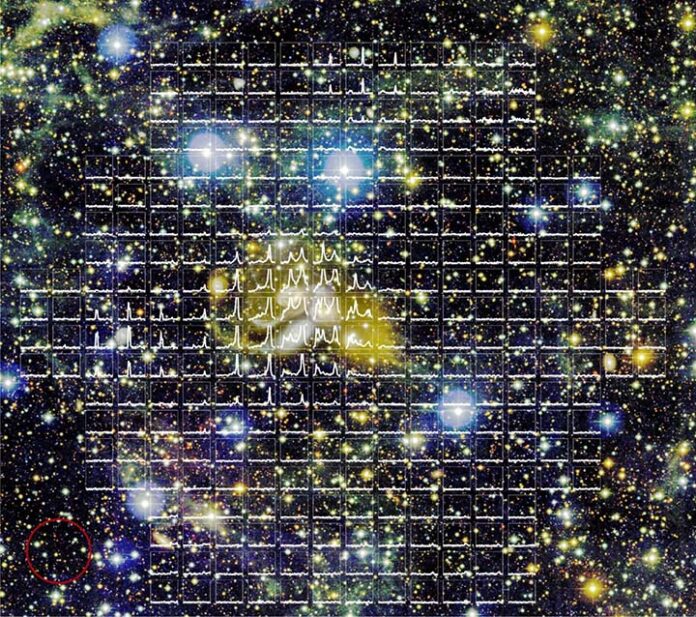A huge atomic gas structure in the vicinity of a galaxy group was spotted by the “China Sky Eye,” also known as the Five-hundred-meter Aperture Spherical Radio Telescope (FAST).
The find came as the world’s most sensitive radio telescope “cast its glance” at Stephan’s Quintet, a visual grouping of five galaxies of which four form a compact galaxy group.
The linear scale of the atomic hydrogen structure reaches some two million light-years or 0.6 megaparsecs, the largest one of its kind ever discovered in the universe, according to the study published on Oct. 19 in the journal Nature.
Also, the structure encompasses an extended source of size of approximately 0.4 megaparsecs associated with the debris field, and a curved diffused feature of a length of around 0.5 megaparsecs attached to the southern edge of the extended source, according to the study.
The researchers said that the diffused feature was probably produced by tidal interactions in early stages of the formation of Stephan’s Quintet.
The results provided new information enhancing our understanding of gas evolution in the universe. However, it is still not clear how such low-density hydrogen gas can survive ionization by the intergalactic ultraviolet background on such a long time scale, according to the study.
Meanwhile, NASA’s James Webb Space Telescope recently captured an image of Stephan’s Quintet, showing in detail how the interacting galaxies trigger star formation in each other and how gas in galaxies is being disturbed.


